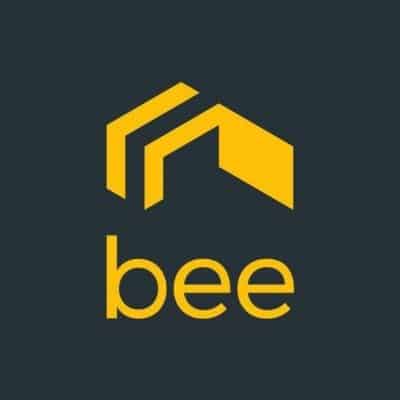The Bee Token
Last Updated: 1st November 2018
The Bee Token technology can be divided into two parts, the Beenest dApp and the Bee Protocols; both use the ERC-20 token, BEE token, to function.
- Beenest
- Bee Protocols
Beenest
The Beenest is a decentralized home-sharing network that is intended to connect hosts with guests in such a way that both can benefit. Beenest is typically compared to a decentralized Airbnb and charges a 0% commission fee to both hosts and guests that transact using the BEE token. Although, it is reported in the Bee Token whitepaper that a 1% commission is charged for users that transact using BTC, ETH (or other utility tokens), as well as a 3.99% commission for users who transact using fiat. Beenest will also take a small cost for gas as well as an insurance fee to help cover liabilities taken on by the hosts.
The Beenest platform requires users to sign up and to submit a basic KYC (know your customer) form before access is granted. Upon registration, users are assigned a reputation score; taken straight from the Bee Token whitepaper, the Beenest platform intends to use the following scoring system:
Lowest (0): The user signed up but didn’t provide a wallet address
Low (1-5): the user authenticated by providing a wallet address along with basic KYC
Neutral (6-10): in addition to fulfilling Low requirements, the user uploaded a valid proof of identification (US Driver's License, Passport, Home Ownership)
High (11-20):in addition to fulfilling Neutral requirements, user has either booked or hosted
Highest (21-100): in addition to fulfilling High requirements, user has given a review to a host or guest
To recap, Beenest is a decentralized application that focuses on building a decentralized home-sharing economy, similar to Airbnb, which uses the BEE token as its ERC-20 utility token. Beenest is built on a set of Bee Protocols (P-A-R) which powers the Beenest application. Developers can then use these Bee protocols to build their own sharing economy applications.
Bee Protocols (P-A-R)
The Bee Protocols are as follows:
- Payment
- Arbitration
- Reputation
Now this is the second part of the Bee Token technology. Through use of its Bee Protocols, developers can build their own sharing economy applications, similar to Airbnb and Uber. In essence, the Beenest platform is just one example of the type of applications that can be built which revolves around the sharing economy. The Bee Protocol work as follows:
Payment
The Bee payment protocol is intended to provide the means for one party to pay another after a good or service has been successfully delivered. For example, Beenest uses the payment protocol to allow guests to pay hosts once all terms are agreed. Upon completion of a booking period, tokens are then sent to the correct addresses. In addition, still using the Beenest platform as an example, in the event of a cancellation by either the guest or host, a fee will have to be paid by the cancelling party.
The payment protocol, in effect, keeps track and dispatches payments to the correct party when necessary. However, in the event of dispute between two parties, the arbitration protocol is required.
Arbitration
As previously mentioned, the arbitration protocol is only activated in the event of a dispute between two parties, at which point funds are sent from the payment contract to the arbitration contract. Both parties are required to stake BEE tokens to the arbitration protocol contract in order to participate. The stake amount is calculated based on the current USD value of BEE and an absentee rate.
Using the Beenest platform as an example, users can also sign up to be arbiters, people who help to settle a dispute between the two parties. All arbiters are selected from an arbiter pool and will each have a reputation score that can change based on the quality of their decisions. Arbiters are required to stake their own tokens in order to be selected for such a role. The more Bee tokens stakes, the higher the likelihood of becoming an arbiter. If an arbiter fails to make a decision on time, they are penalized and their stake is sent to the Bee token reserves. Arbiters are not penalized for incorrect decisions, but they can be penalized for taking too long in coming to one.
Reputation
Similar to a credit score, a reputation score is intended to provide transparency as to the credibility of any individual that you deal with. Calculation of the bee token reputation system is reported as being transparent and easily accessible.
Using the Beenest platform as an example, a user’s reputation is calculated based on how guests and hosts act on the platform. Factors such as: quality of reviews and cancellations, play a factor in the calculation of a user’s reputation score.
Conclusion
To conclude, the Bee Token platform can be divided into two parts, Beenest, which is the decentralized home-sharing application, and the Bee Protocols, both require the ERC-20 BEE token to function.
Beenest is dApp that intends to disrupt the home-sharing economy through use of blockchain technology. Whereas, the Bee Protocols provide a means for developers to create their own sharing-economy type applications. In effect, the Beenest platform is an example of a sharing-economy application that can be built using the Bee Protocols.
Make sure to check out the Bee Token whitepaper for more information.

